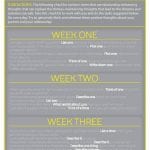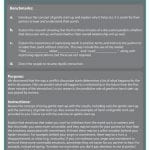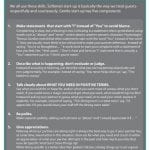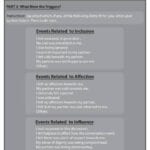
In this episode of our addiction and recovery podcast, host Jackie Pack starts a series about mistakes we often make when communicating in marriage. These common problems get in the way of being understood. Jackie talks about the Gottman Method for couples therapy, which offers steps to improve communication so that conversations bring greater understanding and connection instead of conflict in the partnership. Jackie’s therapy clinic in Utah uses this modality regularly in couples therapy and marriage counseling.
Episodes in this Series on Communication in Marriage:
Episode 158: Communication in Marriage
Episode 159: Gottman Method of Couples Therapy
Episode 160: The Sound Relationship House in the Gottman Method of Couples Counseling
Episode 161: Gottman’s Four Horsemen
Episode 162: How to Have Intimate Conversations
TRANSCRIPT: Communication Mistakes in Marriage
Hi everyone, welcome to Thanks for Sharing. I’m your host, Jackie Pack. So, I’m going to be doing a series on communication.
I’ve got several couples in counseling that I’ve been working with lately, and it seems that we’re talking about communication and the difference between effective and non-effective communication. Some of the couples I’ve been working with for years, and they’re just now in a place in their relationship to really start to use these tools. That doesn’t mean that these tools wouldn’t have been helpful when I first started with them, but for various reasons, they weren’t in a place to start using the tools, and so now they’re starting to use them, and they’re coming in and they’re saying:
“Wow, this is helpful!”
“This method has changed the outcome of our conversations, and this has made communicating with each other go differently, and it feels nice.”
I have some other married couples that I haven’t been working with for very long, and they’re also intrigued by the way we talk about communication, and I think the reality is for most people, we don’t come built with good communication skills. And for most of us, we haven’t had that mentored for us, and so we think that we’re good at communicating. It’s just kind of talking.
I don’t find that very many people are effective at communicating. And I think it is a skill, and so I think it takes practice.
I tell couples when you begin to practice this, it will feel awkward, and just like anything that we are learning for the first time, it doesn’t come naturally to us, and we get uncomfortable with that.
As we talked about in our last episode on “New Beginnings,” that discomfort might make us just want to abandon our efforts, and we shouldn’t do that. You’ve got to stick with it, and it’s good to learn new things, and so to be able to be more effective in the way we communicate, again is going to take some practice. You’re not going to get it right the first time. I tell couples it’s even going to feel a little bit clunky, and you’re going to be kind of stumbling through it, not feeling like you know what you’re doing.
I have some worksheets that I’ll email couples who are working on this, and I’ll tell them, yeah it feels weird to pull out and say hang on, hold that thought, let me grab the worksheet because I want to do this right. But the more we practice, the more natural it feels, the better we get at it, and pretty soon we won’t need the worksheets and it’s not going to f feel awkward anymore as you communicate with each other.
Now I think these are, for me, I’m using these effective communication skills when I’m working with a couple or even an individual. Effective communication skills are going to be necessary in your job, with your kids, with just anybody you’re communicating with. It’s going to serve you better if you have actually spent some time practicing and learning these effective communication skills.
Now I’m trained in the Gottman method, and I think they do a really good job, and have some worksheets—that’s typically what I distribute, the worksheets about effective communication, but they’re not the only people who talk about effective communication. I know Harville Hendrix talks about communication. I know in the business world there are some people, I’m blanking on names as to who those people are and how they teach communication skills. But, I’ve looked at communication skills through a number of lenses, and there might be small differences, this person tweaks it this way, this person goes that way.
The reality is they pretty much all cover the same basics and the same concepts, and so the good news is, say that there are eight people out there who are really focused on teaching effective communication skills. You could learn one of those and you pretty much have your bases covered.
So, one of the things that I first start out telling couples is when we communicate, we do it way faster than is going to be effective. And so rule #1 is SLOW DOWN! And true, it’s not the normal speed that we typically talk, and yet it’s going to be more effective, and sometimes the way that we talk and the speed that we talk at is not the most effective for us.
If you’ve ever had a conversation with somebody who maybe you’re in a different country and they’re speaking in their language, and maybe you’ve learned or picked up some basic words and some basic knowledge of this foreign language, but when you are actually in that country or talking to somebody who is a natural Spanish speaker or a natural Chinese speaker, you’re like, “Oh my gosh, I have no idea what you just said.” Because in our mind as we’re learning a new language, we have to do that so slow, and so I think that’s a good recognition of just how fast communication actually works against us, and we’re not being effective at getting our message across, and at making it so that our message can be received.
Because sometimes we focus on communication in terms of what I’m saying, and we miss out on the other part—that I also want it to be received. Because effective communication doesn’t happen if the other person can’t receive what we’re saying. And so, we’ve gotta’ understand: “How would I feel if I were this person receiving this?”
That’s going to require some changes upfront if I want this other person to receive it. I don’t want them to get defensive. I don’t want them to feel attacked. I don’t want them to feel criticized, so I’ve got to change my message to be one in which they’re not going to kind of put their hand up and refuse it from the get-go, and so the Gottmans call this a gentle startup.
So, I tell couples when you want to talk about something, first of all, you’ve got to let the other person know: “Like hey, I’d like to have a conversation with you about something.”
Or, I use this phrase a lot and I teach it to couples: “I’d like to circle back to something we were talking about.
So mistake #1 I think people make is they go way too fast.
Mistake #2 is we have this idea that communication is going to happen in one conversation, and so we’re trying to get everything that we possibly want to say on the subject and every feeling we might have on the subject in one conversation, and you’ve got to think of communication as a series of conversations, not just a one-time event.
And so I tell couples if communication is being effective, you are always communicating with your partner, and for most people that we interact with, we’re always having conversations, and the conversation never really ends because how I’m received in my fifth conversation with this person is also going to be determined by how they felt about the communication in the previous four. So, I’m always either building trust in the communication process in the relationship, or I’m damaging some of that trust in the communication process.
So again, mistake #2 is we think, “I’ve got to say everything upfront.”
The other thing to kind of go along with mistake #2 is that we will dominate the conversation, and I think that dominating the conversation, obviously, it can be about control. I’m not giving you an opportunity to talk, but the other thing about control if I have in my mindset, isn’t about control, but the other thing about dominating the conversation is if I have in my mindset that I have to say everything right now because this is my only chance to talk about this, then I’m going to go way too long. And normally in communication, we kind of get a sense of, I’m going to tell you this, and at some point, the other person kind of has to give us feedback, or we’re not actually communicating.
Communication is not just a one-dimensional exercise. If I’ve got two people, it’s going to be a two-way communication. If I’ve got three people, there’s going to be three ways that communication is happening, so if I think I’ve only got this one chance, then I’m going to dominate the conversation, which either gets the other person defensive or they just check out, or they stop listening because we’ve kind of past those normal, natural spots where maybe we’d stop and get feedback or we’d stop and get their perspective.
Now, the other mistake that I think we often make in communication is, you know, for most of you if you’ve heard of effective communication skills, you know that there’s a speaker, and that’s kind of identified, and then there’s a listener. And I think most people have some hesitancy about being the listener because it feels like the listener doesn’t get a voice, and that’s true if it’s not effective communication, and so I think we often will resent maybe being in the listener role, or we also are not very effective at listening, and so we switch those roles very quickly. We go from speaker to speaker to speaker to speaker, and we’re just responding to each other and we’re not necessarily listening to each other. In order to have effective communication, that listening piece is key, and it’s not just key in terms of, “I just have to hear what you have to say and accept it as the truth.” That’s not the listener’s role at all.
So, I want to talk a little bit about some of the steps of communication, and then in other series episodes we’re going to talk about building empathy, and we’re going to go deeper into how we do a soft startup.
Now the fourth mistake. (We’re kind of starting this series with the mistakes that we make in communication.) The fourth mistake is often we don’t recognize that when, like if I’m the speaker, I don’t recognize that my perspective is subjective. I often think that it’s objective and I talk that way, and when I talk from this objective point of view, oftentimes the person who is listening to me or the one who I’m talking to, they may not want to listen to me because they’re going to feel criticized, they’re going to feel attacked, and that’s going to lead to them being defensive.
And so as the speaker, it’s my job to help the listener be able to receive my message, and I’ve got to be able to do that in the way that I talk, so I’ve got to have that soft startup and I’ve got to recognize that this is subjective.
I may feel like my perspective is 100% truth, and truth with a big T, but if it’s my perspective, truth is always a little-t truth, and so I’ve got to recognize that if there’s space for something that I’m not aware of or maybe I misinterpreted something.
This goes back to some of our episodes, some of the episodes that I did on confirmation bias and cognitive dissonance in which we understood those principles and understand that we like to believe that we’re really good judges of character. But the truth is there’s a lot working against us when we’re sizing somebody up. And so, we may not be as effective at reading things, or judging things, or interpreting things as we’d like to believe that we are.
And so, I think also recognizing that communicating is subjective and I have to speak as though I understand that it’s subjective. So, I spoke, and then you rolled your eyes, and then you checked out. I don’t know why. I’m not in your body, so I may say something like: “It seemed to me as though you kind of rolled your eyes, and it seemed like you just checked out.”
Now that may be what I think I saw, but I can’t interpret from them what was going on, and oftentimes that’s where communication speeds up and we are jumping to conclusions and we are making assumptions, and in the process, we miss each other, and the point of communication should always be to connect with each other and to understand each other.
Oftentimes the goal is to express ourselves, and not necessarily being understood, but it’s also understanding another person.
So, some of the skills that I want couples to practice—Initially, I’ll say who’s the speaker and who’s the listener? If they’re in a session with me, and sometimes one person is talking about something and I’ll say, “Okay, you’re now being a speaker, and so that makes you a listener.” And I’ll have them hold a pad of paper and a pen and I say, “Write down what they’re saying.”
Now I think it’s important because if the listener is having to write things down, oftentimes the speaker will slow down because they’re watching them write and everybody knows that writing what somebody says is a slower process than hearing what somebody says. And so, then what I find, what I observe when I do this with couples is the speaker naturally slows down because they know that the listener is trying to write this down.
And I also tell the listener, you want to capture the main points of what the speaker is saying. You also want to write those main points in the words that the speaker is using, and so sometimes this happens, this is not a big deal if the writer is writing something, they may say to the speaker, wait a minute, tell me again what you just said, or what was that word that you used? Because they’re trying to write and they forgot that word, so tell me again what that word was. That’s not switching roles. That’s the listener really being effective and really having this purpose of I want to capture what you’re saying to me.
So, the speaker may say, “Oh I said I was frustrated.”
And the listener says, “Okay, right, you were frustrated.”
“And then I got irritated.”
“Okay, irritated, thank you.”
And then the speaker kind of goes on. So, you’re going to want to use when you’re writing down as a listener, you’re going to want to use the words the speaker is saying.
Now one of the reasons for this is that oftentimes we can get our own way, and so this comes from that the fact that communication is subjective, and so if I’m writing the main points but I slightly change the words, I’m inserting my perspective into that process instead of really just trying to capture what the speaker is saying. For effective listening, I kind of have to suspend myself and step out of myself in order to just capture what this person is saying.
And the other thing that I tell couples a lot is, “Words matter!” Now you don’t have to be the most articulate person, but words matter, and so if I make small substitutions, I can very much put my perspective into that and attach my meaning to what you’re saying. Which is not me as a listener capturing truly what you’re saying, so that’s the first field that I have them work on.
Now with time, they probably don’t need a notebook to be writing that down, but I will tell them even once it becomes more natural for you if you have a conversation where you get gridlocked and you’re having a hard time moving past this and understanding the other person, pull out a notebook, pull out a pen and go back to doing it.
It looks like the speaker is talking about whatever, and we’ll talk about in another episode maybe how the speaker can do this in a way where their message can be received and understood and not have the listener be defensive, so the speaker’s talking, the listener is writing it down.
Now for most people, if you’re the speaker, you’re going to get to a place where you’re talking and you kind of pause, and this is where the listener summarizes.
And so they’ll say, “So, what I’m hearing you say…,” or some version of that:
“So, what you said …”
“So what I got from what you just said…
Whatever that looks like, some version of that is fairly neutral.
“Wednesday night when you came home from work…”
Whatever that looks like, and you’re just writing down, and you’re summarizing what you have written down, and you’re saying it to them, and so you’re getting what I would call (use air quotes) “facts.” Because we’re talking about perspective, so these aren’t hard true facts, but you’re giving them back what they just stated to you.
Now, this is an important process because if the speaker is slowed down and they’re hearing their words, not the listener’s words, but they’re hearing their own words coming back at them, oftentimes if we’re speaking and we’re not effective in getting our message across, when we get that reflected back to us or “mirrored” back to us, we’re like, “Oh!” So, this is a chance for the speaker to say, “Oh yeah, I didn’t say that. I don’t know. Let me clarify what I meant by that.”
Or: “Actually that sounds a little bit harsher than I intended it to.”
So, when the listener is reflecting this back, the speaker gets an opportunity to say, “Yeah, you got it.”
Or, “Yes, you understood what I was saying.
Or: “Well let me clarify this.”
Now the listener may also say, if the speaker says, yes, you got it, I always say to the listener, a lot of times just first going around at being a listener and then a speaker is not adequate. I find that there’s maybe a kind of a natural flow of like two to three, depending on how much there is to say about something.
So, I say to the listener, “You’re still not done.”
So, you summarize, and you say, “Do I have that right?”
If they clarify, then again, you’re writing that down again.
“Okay, so what I’m hearing is that it wasn’t this, it was this.”
Or, if they’ve said more, again you’re summarizing what more they’ve said.
Now at the end of that, if they say, “Yeah, okay, I feel comfortable with what you just phrased back to me in terms of what I just said, that’s accurate.”
Then the listener says, “Is there more?” And not surprisingly, sometimes there is, usually I would say—there’s a little bit more.
So, they’ll say “Yeah,” and then they go on again. The listener is writing that down, using their words, getting their perspective, trying to get an understanding of where this person is.
Now the goal of the listener is to put themselves in the speaker’s shoes. It’s not to say, “Well I didn’t say that,” or “I didn’t feel that,” which is a lot of times how that goes. Instead, it’s really just looking to understand instead of getting our points across.
So, the listener may also ask questions—”You mentioned this, I’m not quite sure what you mean by that. Could you say more?”
They’re still staying in that listener role. They’re still making sure that they can understand. So, as I said, this may go two to three times where they’re asking: “Is there more? Or, “Could you tell me more about this? I’m not sure I understand.”
Two to three times before the speaker kind of feels, “Yeah, I feel like I’m kind of done and I want to hear what you have to say.” (Not just what you’re reflecting back or mirroring back to me.)
Now again, this can be tempting for the listener to step in and to start being the speaker, but we’re not done yet, and this is what I am talking about when I say we have to slow the process down and make sure that we hit every step in order to be effective.
So, once the listener has said, “Is there more?” and the speaker kind of gets to a place where—usually what’s happening inside the speaker’s mind is they realize there may be more the listener wants to say, but I’m wanting to open this up to two-way communication. I want to get your perspective.
So, they’ll say something like, “No,” or “I’m good.” or “No, I’m good for now.”
So again, the listener still has a couple of steps before we can switch roles. They’ve got to be able to add some emotions because it’s not just understanding the words that somebody is saying, but it’s also understanding an emotional message to what they’re saying.
And so the listener may say something like, “So when you were feeling irritated when you thought that I ignored you, or you thought that I dismissed you, or I was being abrupt with you, I would think that felt like you felt dismissed or that made you feel sad.”
Something it’s like that (and this is where you have to know), and I usually give couples examples—Here’s the emotions and here’s a list of emotions, and you can either pick one off of that list or you can, it can kind of start your brain thinking so that you can use the emotions, so you’re saying, you’re sending an emotion, saying this is how I think that you felt.
We’re activating our mirror neurons, and if as a listener we’ve done our job well and we’ve stepped into their perspective and kind of activated our mirror neurons, then I can guess at how you might feel.
Now, I tell listeners it really doesn’t matter if you’re accurate or not. You should try to be, but if you’re making an attempt when maybe you say you felt dismissed when I just walked out of the room, maybe the speaker says, “Oh, I don’t know that I felt dismissed. I felt ignored. I felt unimportant.” Now again, dismissed may also fit those words. We don’t have to argue over whether dismissed and the listener using the word “dismissed” was right. We’re sending a word in, and the speaker gets to pick up how they felt, and they’re giving us back the words that they like to use, and so the listener uses those words.
“Okay, yeah, I can understand that you felt unimportant.”
Now, sometimes there’s an advanced skill here. We’re not going to get into that yet, whereas a listener, I may know this person’s story and I may say: “I could understand how given the family you grew up in and given the role that you played in your family not feeling important or looking, or being overlooked is a sore spot for you, and so I can understand how that got triggered, and I’m so sorry about that.”
But that’s more of an advanced skill, so we’re sending in emotional words. Even if we’re wrong, what I find is most times the speaker doesn’t care if we get the emotion wrong. They’ll feed back to us what they say their emotional word is, and there’s usually an appreciation that we’re trying to understand them and trying to understand the emotions that were going on, so once we’ve got the emotional piece, then we have to validate that, and that’s some of, more advanced, I can go back into their story, but I can say kind of a basic validation.
“I can understand how when I walked out of the room …”
Even if as a listener you’re like, “I didn’t even hear them say anything. I didn’t walk out of the room because I didn’t want to talk to them.” That comes up later, so you just say, “I can understand how when I walked out of the room, for you, that felt like you were unimportant and you were overlooked” –or whatever that means. Maybe they were speaking softly. We don’t have to get into that because I’m in their perspective and I’m talking about how they must feel, and I’m really trying to get to that place of understanding.
So, they may say, “Yeah, that’s how I felt.”
Now we’re kind of finished. Now sometimes you may say, if it’s after the fact or if it’s after the Gottmans call it, the regrettable incident, after some conflict, after a fight, I usually say again, words are important, and so it would be important to then say, “I apologize,” or “I’m sorry that happened. That was not my intent at all, but I can totally understand how that’s how you perceived that.”
And I usually tell couples to have some type of physical touch to also communicate what you’re saying verbally, whether that’s a hand on their hand, whether that’s a hand on their knee, whether that’s kind of a little hug or something like that, or at least meeting them with eye contact so that they are understanding that this is where you’re coming from and it’s authentic and genuine.
Now, then I usually say to couples, “Are we ok to switch spots?” But let it feel done. We’ve done that.
“You’ve spoken; I’ve listened.”
Because if the speaker doesn’t truly feel listened to, they’re not actually going to get out of the speaker role, even if they say, “Yeah, we’re ok to switch.” What I find is they have a hard time, then, going into the other person’s perspective because they didn’t feel like they’re done speaking.
So, if we’re truly finished and are we ok to switch roles, now I do say to the listener, “If we switch roles and you find that they’re actually not doing the listening or they keep speaking, now this could be frustrating for the listener, I get it, but you—either one of you have to understand, ‘Oh, we didn’t quite finish the last one.’”
So, the listener may say something like, “Hey, it seems like there’s more that you had to say. Were we not really done?” That’s a way of not being charged and not, “You keep interrupting me and you’re not actually listening to me.” That’s going to get a different response than if you were to say something like, “It seems like you have more to say and I’m wondering if we were really done and ready to switch roles.” Yeah, that may be frustrating for the listener who thought they had done a good job as a listener, and where the person said they were done and then they’re not actually done.
And often I just have to say, “What’s the point of why we’re having this conversation? If it’s to have effective communication and if it’s to reach that point of understanding each other, then we have to go back because to keep going forward is actually going to usually end in a negative outcome and more conflict, and neither one of you feel understood. So, we might feel frustrated, but we must go back. Tell me more about this.”
Now sometimes if I’m working with a couple, sometimes I can sense if the listener keeps doing this over and over again and they never quite get to their turn or the speaker will never quite let go of their role as speaker, we have a different issue going on, and it’s a control issue, and it’s more about I want to be controlling in the conversation, not that I want to have effective communication, so that’s a different issue.
And then we switch roles, and sometimes the listener then says, “Here’s my perspective from what happened Wednesday night,” or whatever that looks like.
Now, also if there hasn’t been kind of a conflict or a regrettable event that the couple needs to process, there are still things to talk about, and we still need to do kind of the steps, have a clear speaker, because I find sometimes with couples, maybe somebody just comes home and they start talking about how their day went, and they’re not resolving any conflict or there’s not anything that they thought was undone between them in the relationship, but they’re just talking about how their day went, and so the other person doesn’t recognize that and they just start talking about how their day went.
Usually, it comes up a couple of days later, a week later, that somebody didn’t feel heard. I was talking about how my day went, and then you just told me how your day went, and so I’ve had enough couples kind of who go through that cycle where I just say always be aware of who’s speaking, and it’s usually the person who first starts talking, and so all of a sudden if they’re speaking, they start speaking, even if it’s about, “Oh I had a bad day at work,” or “I had a great day at work,” or “I was home with the kids and guess what happened?” Whoever initiates that conversation is the speaker, and that should signal to the other person I’m now in a listener role, and again it may go pretty smooth because there’s nothing difficult to work out or it’s not really significant data, but if we stay in those listener/speaker roles, we’re going to be much more effective at communication.
So again, I’m going to do a series on this, and we’re going to talk about effective communication. We’re going to talk about the gentle startup. We’re going to talk about when it gets really difficult or when it gets really dicey.
We’re also going to talk about how do we talk about mundane things because sometimes people have this idea that if there’s nothing significant to share, I don’t need to share, and then we can fall into a pattern of not really knowing what happens with the other person because we’re not really sharing because we see that it’s insignificant. And I always tell couples it’s insignificant until all of a sudden, it’s significant. And sometimes we feel like, well now it’s significant but it’s been going on for months and it wasn’t significant, so now in order to tell you about the significant thing I have to go back three months and that just seems super long, so I don’t even tell you about significant things.
I think when we’re talking about being relational, we have to recognize that there’s nothing that isn’t significant because this is how the person is experiencing their day, and even small, mundane things are things that we want to know about this person if we want to feel that connection.
So, I’m excited to do this series on communication. If you have any questions, message me. I’d love to hear if you have specific situations or specific questions when it comes to effective communication. I’d love to hear from you.
At the end of this episode, I want to remind you that your story matters. Remember, there is something meaningful in every chapter. Don’t wait to share your story until it’s finished. Until next time, Jackie.










